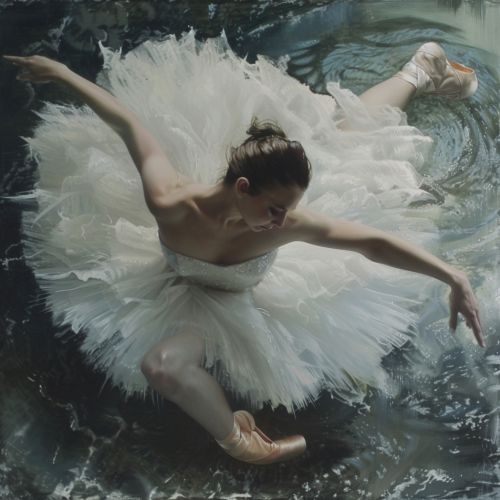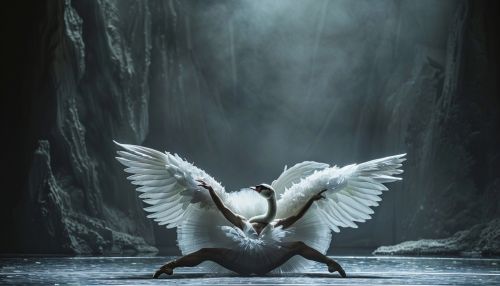The Dying Swan
Introduction
"The Dying Swan" is a renowned solo dance piece in the ballet repertoire, choreographed by Mikhail Fokine to the music of Camille Saint-Saëns' "Le Cygne" from "Le Carnaval des Animaux". This piece has become emblematic of the classical ballet tradition and is celebrated for its expressive portrayal of a swan's final moments. The dance was created for the legendary ballerina Anna Pavlova, whose interpretation remains iconic.
Historical Context
The creation of "The Dying Swan" in 1905 marked a significant moment in ballet history. At the time, ballet was undergoing a transformation, moving away from the rigid structures of the Romantic ballet era towards more expressive and modern forms. Fokine's choreography for "The Dying Swan" exemplified this shift by emphasizing emotional expression and fluidity of movement over technical virtuosity.


Choreography
"The Dying Swan" is a short solo piece, typically lasting around three minutes. The choreography is characterized by its continuous, flowing movements that mimic the delicate and graceful motions of a swan. Fokine's use of port de bras (arm movements) is particularly notable, as it captures the swan's struggle and eventual surrender to death.
The dance begins with the swan gliding across the stage, its movements smooth and serene. As the piece progresses, the swan's movements become more labored and erratic, reflecting its impending demise. The choreography demands a high level of emotional expression from the dancer, who must convey the swan's journey from life to death through subtle nuances in movement and facial expression.
Music
Camille Saint-Saëns composed "Le Cygne" (The Swan) as part of his suite "Le Carnaval des Animaux" (The Carnival of the Animals) in 1886. The piece is scored for solo cello and two pianos, although it is often performed with a single piano accompaniment. The music's lyrical and melancholic quality perfectly complements the theme of the dance, enhancing the emotional impact of the performance.
The cello's melodic line, with its long, sweeping phrases, mirrors the swan's graceful movements, while the piano accompaniment provides a gentle, supportive backdrop. The music's tempo and dynamics are carefully matched to the choreography, creating a seamless integration of sound and movement.
Performance History
Anna Pavlova's debut performance of "The Dying Swan" took place at a gala in St. Petersburg in 1905. Her interpretation of the role was widely acclaimed for its emotional depth and technical precision. Pavlova's delicate and ethereal portrayal of the swan's final moments captivated audiences and established the piece as a staple of the ballet repertoire.
Since Pavlova's time, many renowned ballerinas have performed "The Dying Swan," each bringing their own unique interpretation to the role. Notable performers include Maya Plisetskaya, Galina Ulanova, and Natalia Makarova. The piece continues to be a favorite among audiences and dancers alike, serving as a testament to its enduring appeal.
Technical Aspects
Performing "The Dying Swan" requires a high degree of technical skill and emotional maturity. The dancer must possess strong control over their body, particularly in the use of port de bras and épaulement (shoulder movements). The choreography demands a seamless flow of movement, with each gesture transitioning smoothly into the next.
In addition to technical proficiency, the dancer must also convey the emotional journey of the swan. This requires a deep understanding of the character and the ability to express complex emotions through subtle changes in movement and expression. The dancer's interpretation of the role can greatly influence the overall impact of the performance.
Legacy and Influence
"The Dying Swan" has had a profound influence on the world of ballet and beyond. The piece is often cited as an example of the power of dance to convey deep emotional and narrative content. Its success helped to establish Mikhail Fokine as a leading choreographer of his time and cemented Anna Pavlova's status as one of the greatest ballerinas in history.
The piece has also inspired numerous adaptations and reinterpretations in various artistic mediums. It has been referenced in literature, film, and visual art, and has been performed by dancers from diverse backgrounds and styles. "The Dying Swan" remains a powerful symbol of the beauty and fragility of life, as well as the expressive potential of the human body in motion.
